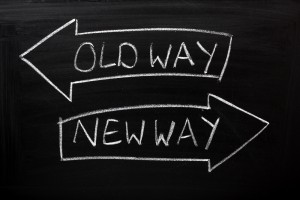Curiosity doesn’t get much airplay when it comes to the writing or speaking about leaders. That’s a shame, because it may be one of the most important attributes of leaders who succeed with their teams and businesses in our world of rapid change.
Natural curiosity is all about that impossible-to-fake drive to understand the unknown. It’s a personal or team quest to figure out what makes customers and markets tick. It’s an insatiable drive to find a different way to do something that is better for someone who gets a vote on whether we succeed or fail.
In the right environment, curiosity leads to experimentation. Experimentation is the foundation of innovation.
A Case Study and Three Curious Questions:
I once worked for a leader who lived and led by his curious nature.
His questions about our customers, competitors, processes, and external events weren’t tests or even thinly veiled critiques. They reflected his pure sense of wonder. Instead of stressing us out, they fed our curiosity and subsequent explorations.
A few of those explorations yielded great treasure. All of them taught us to think critically and avoid becoming prisoners inside our own four walls (or industry, or business model).
His three recurring questions were:
- Why? This question was an invitation to look deeper and harder at an issue. He wanted us to understand psychology of customers and consumers or to explore the thinking of our competitors at a deep level. A “Why?” question suggested it was time to go out and study.
- How Might? This question was one of our favorites. A “How might?” offered us a license to go wild with our ideas. I didn’t think of it then as a strategy on this leader’s part to promote divergent thinking, but it was. Brilliant!
- What if? Finally, when the “What if?” question showed up, it was time to begin putting our ideas into action. We stopped the divergent thinking and converged around an idea or approach. And of course, the expectation was that we would bring the idea to life to see what might happen.
This leader wasn’t afraid to point in a direction, or, say “no” to initiatives that just didn’t pass his filters. However, his overall theme was one of let’s find a way forward to better serving customers, opening new markets, or leveraging new approaches.
It started with his genuine sense of wonder.
[bctt tweet=”Natural curiosity is all about that impossible-to-fake drive to understand the unknown” username=””]
Too Often, We Manage the Curiosity Out of Our Businesses:
One of the unintended consequences of management and leadership practices in many companies is to stifle curiosity.
 Instead of diverging from time-to-time, everything converges around metrics, scorecards, and short-term results. Curiosity and as a result, innovation, are left for an undefined future time that is often never reached.
Instead of diverging from time-to-time, everything converges around metrics, scorecards, and short-term results. Curiosity and as a result, innovation, are left for an undefined future time that is often never reached.
In other organizations, curiosity stops or goes splat, face first at the functional walls. You can be curious in your sandbox, but don’t even think about asking questions about another group’s sandbox.
Where something less than operational excellence is the order of the day, it’s commonplace to see curiosity managed out of existence to not inconvenience those in power. Laziness squashes curiosity and creativity.
Often, I see the predominant management philosophy as one of pursuing operational excellence. Ironically, in their drive for eye-popping efficiency with today’s machinery and approaches, they fail to inspire their teams to build tomorrow’s tools, machines, and strategies.
Is Curiosity Dying?
In a recent advertisement for the Museum of Science and Industry in Chicago, the opening lines read:
“Our worldwide levels of curiosity are at an all-time low. Attention spans are shrinking. We look more at our screens than at each other. We accept too much at face value. We’re not pursuing answers beyond the first entry that comes up in a search.”
While I’m not sure how they substantiate their claim, I buy their premise. I suspect many of you might as well.
Curiosity and a sense of adventure in pursuit of new, different, or even the impossible, have propelled us forward throughout history. We need that same sense of curiosity now more than ever.
Curiosity is a Critical Leadership Behavior:
I grow tired of reading (or writing) about the same behaviors that everyone can rattle off about effective leaders. Trust, caring, competence, listening, coaching, supporting…blah, blah, blah. Those are easy.
Curiosity is hard.
 It implies that you don’t know the answer. Many in leadership roles wrongly perceive they must be seen as having all of the answers.
It implies that you don’t know the answer. Many in leadership roles wrongly perceive they must be seen as having all of the answers.
Curiosity requires rethinking the status quo. It requires reviewing and throwing away long-standing assumptions proven false about the world we live and work in.
Curiosity requires giving people freedom to explore. Mostly, we constrain that freedom in our workplaces.
Curiosity requires giving people the chance to learn. We’re usually too busy to spend time learning, especially if learning involves failing and trying again.
Curiosity requires people to diverge in their thinking. Mostly, we manage to converge on an issue.
Curiosity is best navigated across groups of diverse thinkers. Our organizational politics fights this.
The Bottom-Line for Now:
Let me leave you with a question to stimulate your curiosity? For this question, it’s not a matter of “If” but “When?” and Where?” What trigger event in a technology or market force far removed from your firm will change everything for you, your industry, and your customers?
Only the curious will explore and answer this question and survive.
—


